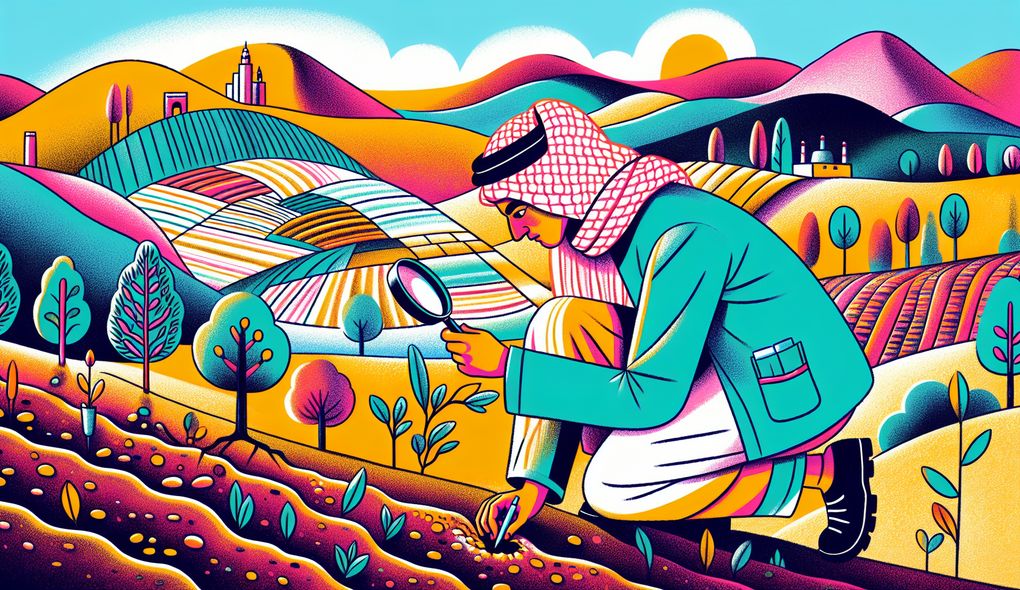What strategies do you use to engage and involve key stakeholders in soil conservation initiatives?
SENIOR LEVEL

Sample answer to the question:
To engage and involve key stakeholders in soil conservation initiatives, I start by conducting thorough research on the specific stakeholders and their interests, needs, and concerns. This helps me tailor my approach and messaging to resonate with them. I then use effective communication techniques, such as active listening and clear and concise messaging, to engage stakeholders and ensure their voices are heard. I also actively involve stakeholders in the decision-making process by seeking their input and feedback on conservation plans and projects. Collaboration and building strong relationships are key strategies I use to involve stakeholders in soil conservation initiatives.
Here is a more solid answer:
To effectively engage and involve key stakeholders in soil conservation initiatives, I employ several strategies. Firstly, I conduct comprehensive research and stakeholder analysis to understand their needs, interests, and concerns. This allows me to tailor my approach and messaging to resonate with them. Secondly, I utilize various communication channels, such as meetings, workshops, and online platforms, to actively engage stakeholders and ensure their voices are heard. I practice active listening, ask open-ended questions, and provide clear and concise information to foster meaningful dialogue. Additionally, I involve stakeholders in the decision-making process by seeking their input and feedback on conservation plans and projects. This collaborative approach fosters a sense of ownership and buy-in from stakeholders. Lastly, I prioritize building strong relationships with stakeholders by regularly communicating updates, acknowledging their contributions, and providing opportunities for continued engagement.
Why is this a more solid answer?
The solid answer expands on the basic answer by providing specific strategies like stakeholder analysis, tailored messaging, utilizing various communication channels, active listening, involving stakeholders in decision-making, and building relationships. It also includes examples of how these strategies contribute to effective stakeholder engagement. However, the answer could still benefit from more specific details and examples to make it more comprehensive and compelling.
An example of a exceptional answer:
To ensure effective engagement and involvement of key stakeholders in soil conservation initiatives, I adopt a multi-faceted approach. Firstly, I conduct thorough research and stakeholder analysis to gain in-depth understanding of their unique perspectives, needs, and aspirations. This enables me to create targeted outreach strategies and messages that resonate with each stakeholder group. For example, for farmers, I emphasize the economic benefits of adopting soil conservation practices. Secondly, I establish strong partnerships with relevant organizations and agencies to leverage their resources, expertise, and networks. Together, we work towards common goals and pool our collective knowledge to address challenges and seize opportunities. Thirdly, I employ innovative methods such as gamification and interactive workshops to make the engagement process enjoyable and stimulating for stakeholders. This fosters active participation and ownership of the conservation initiatives. Lastly, I ensure regular communication and transparency by providing timely updates, organizing town hall meetings, and utilizing online platforms for ongoing dialogue. By proactively addressing concerns and soliciting feedback, I create an inclusive and collaborative environment where stakeholders feel valued and empowered.
Why is this an exceptional answer?
The exceptional answer goes beyond the solid answer by providing more specific and innovative strategies such as targeted outreach, establishing partnerships, employing interactive methods, and ensuring regular communication and transparency. It also includes examples of how these strategies have resulted in effective stakeholder engagement. Overall, the exceptional answer demonstrates a comprehensive understanding of stakeholder engagement and offers creative approaches to maximize involvement.
How to prepare for this question:
- Research and familiarize yourself with the key stakeholders involved in soil conservation initiatives, such as farmers, landowners, government agencies, and environmental organizations. Understand their perspectives, needs, and concerns.
- Develop strong communication and active listening skills. Practice asking open-ended questions, summarizing key points, and conveying information clearly and concisely.
- Learn about different engagement techniques and tools, such as conducting stakeholder analysis, facilitating workshops, and utilizing online platforms for communication and collaboration.
- Build your knowledge of soil conservation best practices, relevant legislation, and funding opportunities to showcase your expertise and ability to effectively implement conservation initiatives.
- Seek opportunities to gain experience in collaborating with diverse stakeholders, such as volunteering with local conservation organizations or participating in community engagement projects. This will help you develop practical skills and demonstrate your commitment to stakeholder involvement.
What are interviewers evaluating with this question?
- Communication
- Problem-solving
- Collaboration
- Leadership

